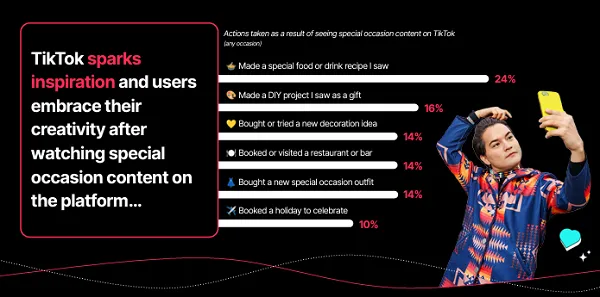I am often asked by leaders how to manage constant negativity from their teams.
I have been fascinated with positive thinking since reading the book ‘Learned Optimism’ by Martin Seligman, positive psychology’s founding father, who argues that we can cultivate a positive outlook and perspective.
Seligman (2006) explored the beneficial impacts of optimism on quality of life, performance, motivation and health. This involves gratitude, helping others in greater need than yourself, challenging negative thoughts and beliefs, and tackling negative self-talk head-on. He recommends practical techniques for breaking pessimistic habits and replacing them with positive ones.
He also explores the question, can you learn to have a positive outlook?
I believe this is very complex. We are all wired differently and have different personalities and life experiences. There are team members who face genuine mental health challenges every day. For some, life involves complex relationships, challenging upbringings and difficult circumstances. Simply telling people to “stay positive” can be very undermining and also fails to recognise the whole person.
Toxic positivity, a term coined by Dr Jaime Zuckerman, is described as “the assumption, either by one’s self or others, that despite a person’s emotional pain or difficult situation, they should only have a positive mindset”. This is an important frame of reference for leaders when dealing with negativity in the workplace and not minimising what the team is going through.
When a customer service team seems to be in a spiral of negativity, I encourage all service leaders to ask one key question.
Why?
I have observed over many years this can be for a number of reasons, in my experience, the most common being:
- Unrealistic workload
I have seen examples of team members with completely unachievable workloads which no amount of positive thinking will ever fix. Having appropriate resources, which includes people, is critical in building positive team morale and motivation. And in the current environment where some job vacancies are difficult to fill, I acknowledge this is a genuine challenge for leaders and teams. - External influences
This could be anything from technology that constantly fails to other teams not responding to customers and making work more difficult for the team. It can also relate to circumstances outside of work. - Challenging customers
Escalating customer behaviour has been a significant factor both during and post covid. This can also include dealing with an increased number of complaints and empathy fatigue from having to deal with ongoing customer issues. - Wrong job-fit
There are some people who may not be suitable to work in customer service or are fatigued by their role. They tend to constantly complain and are negative about their work which brings the entire morale of the team down.
I believe there is a lot a leader can do to help the team improve the level of negativity and focus the team on proactive thinking. This includes:
Listen and validate
Giving the team the opportunity to get things off their chest and vent their frustrations is critical. Ask the team about their biggest blocks and barriers to delivering a great customer experience. Acknowledge the challenges they are going through and demonstrate true empathy and care. This is also an important consideration when dealing with individuals going through difficult times. Meet people where they are at.
Focus on what you can control
One of my favourite models I explore with teams comes from Stephen Covey’s best-selling book, ‘7 Habits of Highly Effective People’. Help the team to identify what is outside of what they can control, influence and change and what they can control influence or change. Help the team to see it is best to spend their time and energy on what they can control while acknowledging the difficulties they are unable to do anything about.

Allow time for constructive venting
There are times when it is important to share a difficult conversation or debrief with a fellow team member who understands their world. This can be helpful in brainstorming solutions and new ideas. I always make a distinction about how customers are spoken about in the workplace. Negativity breeds more negativity and can become a pattern of behaviour if not addressed.
Be an advocate for the team
As a service leader, be an ambassador for change. Whether it is going in to bat for the team for more resources, headcount, or improved technology, build a strong business case that helps senior leadership to see how your proposed changes will improve customer satisfaction and employee engagement or reduce rework. Share with the team what you are doing and even if changes cannot be made, they will still appreciate your efforts.
Address individual negativity
If it is isolated to one team member, it may be time for some coaching and feedback. If the team member has been given all the support, help and coaching and still talks every day about how much they dislike their job and customers, it may be time for a different conversation to help them to find a role that may be more suitable for them. Keeping a team member in a position where they don’t want to be can have long-term catastrophic impacts on team morale and motivation.
I am sure you have heard the expression that “One bad apple can spoil the bunch”. Scientists have discovered ripening fruits emit a gaseous hormone called ethylene that promotes ripening in other fruits. In a very literal sense, one ripening apple will release enough ethylene that it will cause other apples to ripen and eventually begin to rot. I have witnessed the same thing happening in teams. I have had two conversations this week with leaders who shared the difference it has made to team morale when consistently negative team members moved on to other roles outside the company.
Each day, we all have a certain amount of energy to expend, and great service leaders listen, acknowledge and validate what their teams are going through and help their teams to focus on proactive thinking and what they can control, influence and change.
Written by Monique Richardson.
Have you read?
How raising your emotional intelligence can make you the best salesperson in the room by Christopher Golis.
The Great Resignation is Over – Or Is It by Walt Brown.
How to (Really) Build Cross-Cultural Competence from Education Abroad Experiences by Dr. Paula Caligiuri.
To Achieve Top Performance, Growth Mindset is Not Enough by Brent Keltner.
Book Review: Confessions of an Economic Hit Man 3rd Edition – China’s EHM Strategy; Ways to Stop the Global Takeover, by John Perkins by Ladys Patino.
Track Latest News Live on CEOWORLD magazine and get news updates from the United States and around the world.
The views expressed are those of the author and are not necessarily those of the CEOWORLD magazine.
Follow CEOWORLD magazine headlines on: Google News, LinkedIn, Twitter, and Facebook.
Thank you for supporting our journalism. Subscribe here.
For media queries, please contact: info@ceoworld.biz






































































